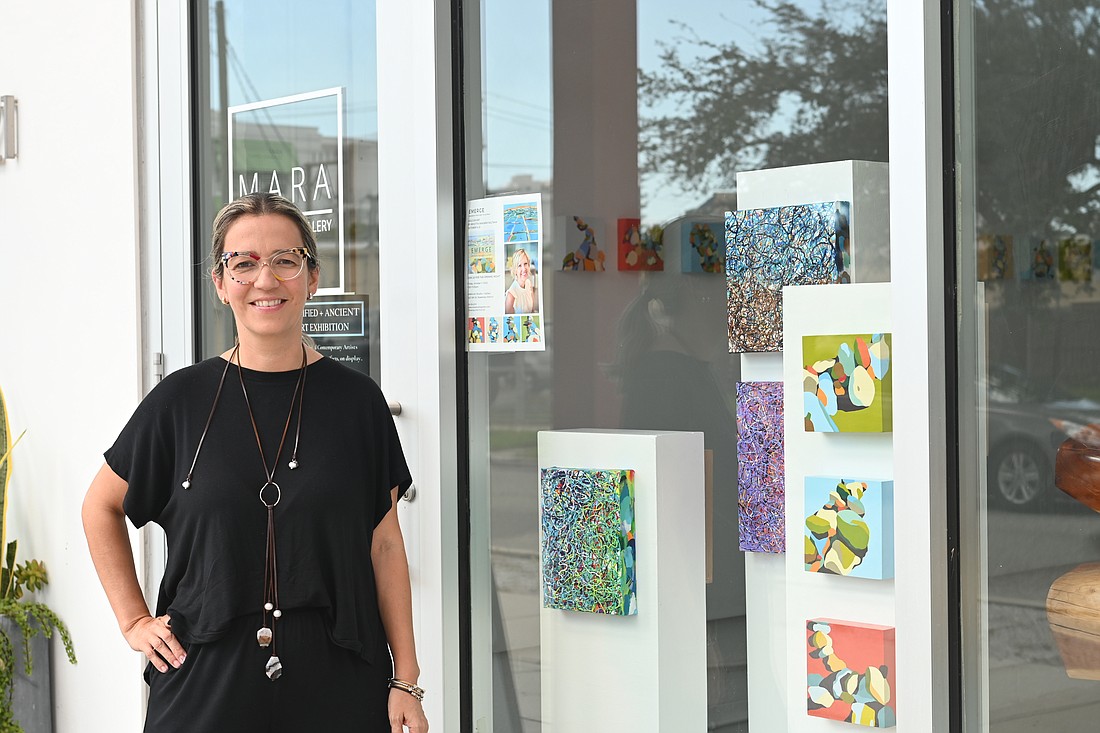- October 23, 2024
-
-
Loading

Loading

It was a day of celebration for Mara Torres González, the culmination of an intense period of her life that resulted in some of her most fulfilling work. And it wound up hitting a little too close to home.
Torres González, a Puerto Rico native, celebrated the five-year anniversary of Hurricane Maria with a Sept. 20 book signing at Sarasota Art Museum. At that event, she spoke about her passion project painting images of the storm that had hit her homeland.
A week later, her home was buffeted by the heavy winds of Hurricane Ian. And even before Ian, the very day of her book signing, Puerto Rico was being hit by another storm.
“They were being hit by Fiona and I was supposed to be celebrating my book signing,” she said in early October. “There are artists that go through a lifetime and never get those doors open. But I stopped posting because I felt like, ‘I’m celebrating something and they're going through the same thing all over again five years later.”

Her book “209” refers to the precise date — September 20, 2017 — Hurricane Maria hit Puerto Rico, and its cover image is a striking painting that looks like a doppler radar image.
That painting, oddly enough, hangs in the artist’s bedroom.
It’s a constant reminder of the trauma inflicted on her homeland, but it brings Torres González a semblance of peace.
She endured Hurricanes Irma and Maria at home with her compatriots; she never really wanted to leave Puerto Rico, and she spent a long time documenting the aftermath of the storm.
Then, after taking photographs, she spent a long time turning them into paintings. Torres González says the process started as soon as she opened the door of her house, and it continued for months after Hurricane Maria. “209” is a tribute to that time of her life.
And strangely enough, it may someday see a sequel.
Torres González endured a difficult time here during Hurricane Ian, and her home was actually more damaged here in Sarasota than her home had been in Puerto Rico. But in her mind, the main difference between the two situations is the hope of recovery.
"We started to lose shingles around 9 a.m.,” she says of her Hurricane Ian experience. “We lost more than 50% of our roof.
"We had water coming though light fixtures, AC vents and the ceiling but we never lost power. In Puerto Rico, we lost power with Irma. By the time Maria made landfall, we didn't have any power. And then we were without power in our house for 105 days.”
Torres González says she met many of her Sarasota neighbors for the first time in the aftermath of Hurricane Ian; they were going up and down the block collecting the shingles of houses that lost them. That’s one place where she sees a parallel, but with a caveat.
In Puerto Rico, she says, the neighbors had to take collective action. They aren’t just people that live next to you; they become your family, and after a storm, your salvation.
“In my neighborhood, we couldn't leave because of debris in the entrance,” she says. “The neighbors used a saw — with no power — they had to cut all the trees and a clear path for cars to be able to go in and out. That’s what I'm telling you when I say the community moved faster than the government. I think the government was never prepared. Here, you notice trucks lined up before the hurricane. Even how horrible this has been — and it has been a catastrophe — but they were prepared. And now they’re in action.”
Even today, five years after Irma and Maria, there are more than 1,000 Puerto Rico homes with blue tarps on their roofs.
One of the great ironies for Torres González is that her Puerto Rico home managed to avoid a blue tarp; but in the immediate aftermath of Hurricane Ian, she needed one to cover her roof in Sarasota.
The painter is going through the same process of documentation that she did after the storms of her homeland, and she says she's currently struck by the pace of the recovery process for places like the Dominican Republic compared to Puerto Rico.
It's so much slower in Puerto Rico despite or because of the island's connection to the United States; it's very complicated, says Torres González, and it's a topic that will never be far from her heart.
"I'm always questioned about why I get inspiration from social injustice or catastrophes," she says. "I don't know. But I would say my best work has come from them. I guess it's my way of being a voice and helping whoever does not have a voice. This is the most meaningful and personal life project because it’s not just my story."